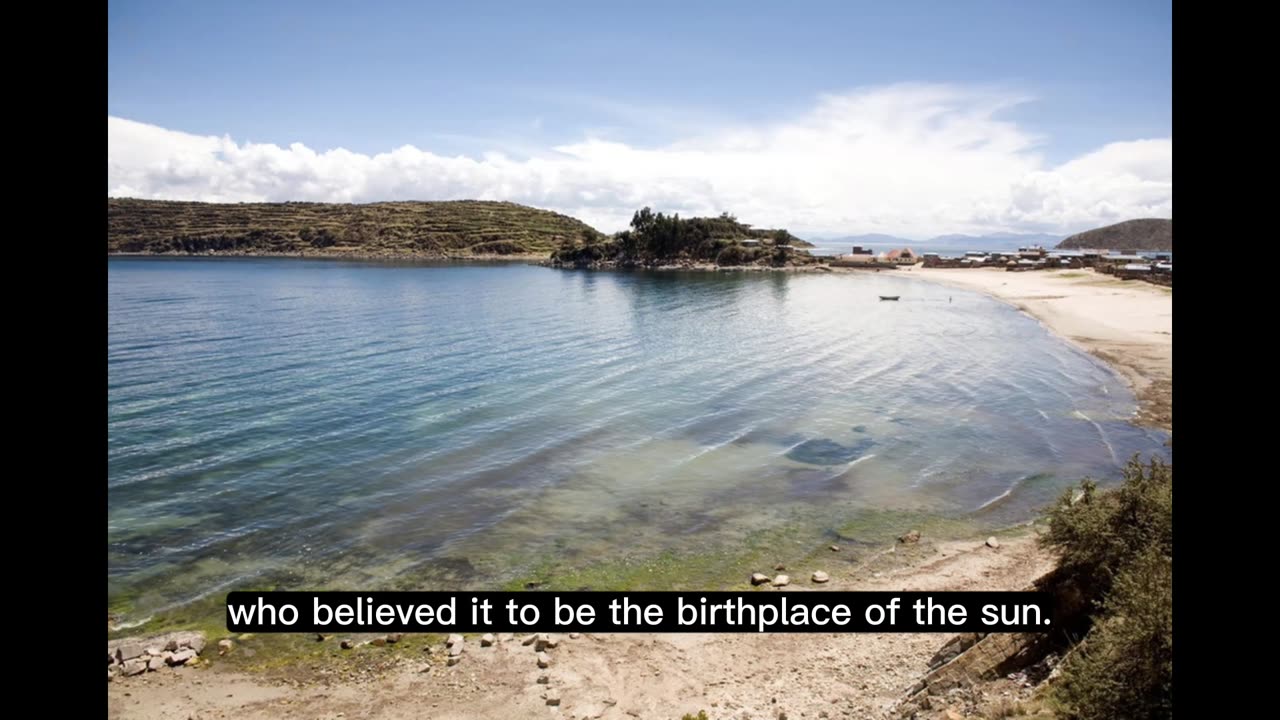Premium Only Content

Lake Titicaca: The Sacred Lake Straddling Peru and Bolivia
Lake Titicaca: The Sacred Lake Straddling Peru and Bolivia
Lake Titicaca, located between Peru and Bolivia, is the largest freshwater lake in South America and holds the title of the highest navigable lake in the world with an elevation of 12,507 feet. It covers an expansive area of 3,232 square miles and serves as a significant cultural, historical, and ecological landmark.
The lake is fed by both rainfall and melting glaciers, with 25 rivers contributing to its waters. It hosts more than 530 aquatic species, including endangered species like the Titicaca water frog and the Titicaca grebe.
Lake Titicaca has long been considered a sacred site, especially for the Inca civilization, who believed it to be the birthplace of the sun. Today, it continues to be a spiritual and cultural hub for the Aymara and Quechua peoples.
Tourists flock to the lake for activities like boating, fishing, and visiting the unique floating Uros Islands, which are made entirely of reeds. Despite its natural beauty, the lake faces challenges such as pollution and overfishing, prompting ongoing conservation efforts.
SEO-Based Keywords
Lake Titicaca, Peru, Bolivia, largest freshwater lake, South America, highest navigable lake, elevation, cultural landmark, historical landmark, ecological landmark, rainfall, melting glaciers, rivers, aquatic species, Titicaca water frog, Titicaca grebe, Inca civilization, Aymara, Quechua, Uros Islands, boating, fishing, pollution, overfishing, conservation efforts,
-
 2:12:07
2:12:07
Side Scrollers Podcast
20 hours agoCULTURE SHIFT CAUSES MELTDOWNS + MASSIVE CENSORSHIP EFFORTS RAMP UP | SIDE SCROLLERS LIVE
19.9K6 -
 11:25
11:25
Nikko Ortiz
1 day agoMost Painful Fails
53.2K28 -
 43:55
43:55
pewculture
6 days ago $4.73 earnedIf the Purge was real, this is what we'd do... - EP#24
16.8K5 -
 8:14
8:14
MattMorseTV
1 day ago $11.12 earnedTrump just DROPPED the HAMMER.
61.7K69 -
 LIVE
LIVE
Lofi Girl
2 years agoSynthwave Radio 🌌 - beats to chill/game to
369 watching -
 22:39
22:39
BlabberingCollector
10 hours agoThe Alphabet Mafia Is Mad At JK Rowling AGAIN
23.3K3 -
 5:30:52
5:30:52
SpartakusLIVE
11 hours agoDuos w/ @GloryJean || #1 Masculine Muscle MASS sears YOUR retinas with MIND BENDING content
232K3 -
 3:05:49
3:05:49
TimcastIRL
11 hours agoNew DOCS PROVE Obama Hillary CONSPIRACY To SABOTAGE Trump Admin | Timcast IRL
240K143 -
 2:29:36
2:29:36
Laura Loomer
11 hours agoEP136: YOU'RE FIRED! White House Vetting Crisis Continues
68.9K40 -
 8:07
8:07
MattMorseTV
11 hours ago $7.73 earnedTrump just LOWERED PRICES by 75 PERCENT.
42.3K43